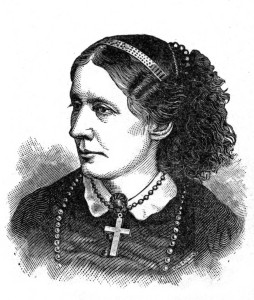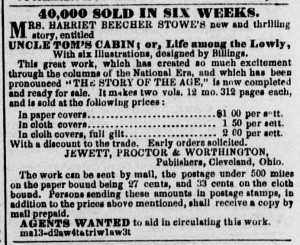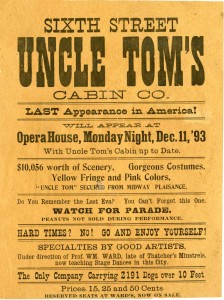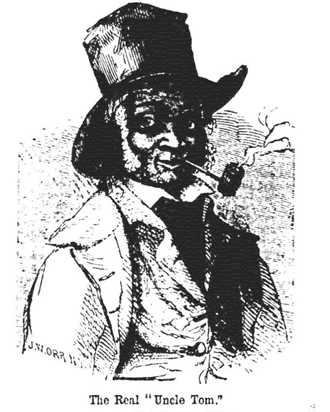Uncle Tom’s Cabin: The Excitement and the Influence


Abolitionist Harriet Beecher Stowe wrote Uncle Tom’s Cabin in 1852 as a direct response to the passing of the Fugitive Slave Bill. This bill was a part of the Compromise of 1850, an ineffective attempt by Congress to reconcile the opposing agendas of Northern and Southern states concerning the expansion of slavery into the newly-acquired US territories won during the Mexican-American War. The Fugitive Slave Bill established strict requirements for all federal states and territories to arrest runaway slaves within their respective jurisdictions and to actively return them to the South. This infuriated Northern abolitionists, including Stowe, who felt they were being forced to comply with a cruel and immoral institution to which they were staunchly opposed.
Outraged by the bill and its implications, Stowe wrote Uncle Tom’s Cabin to illustrate the brutality of slavery to Northern whites, most of whom had no first-hand exposure to the institution. Stowe originally published the story as a series of vignettes for the Free Soil newspaper The National Era, but after positive reactions from her readers, she decided to re-publish the work as a novel. This decision was met with instant success, and 300,000 copies of the book were sold in the US alone during its first year of publication. It also proved wildly popular in Europe. A million copies were sold in England and over two million were sold worldwide. The book was translated into dozens of languages, and it was almost the top-selling book of the 19th century, second only to the Bible.

In the United States, Northern whites, many of whom had been apathetic and even hostile to blacks and abolitionists, started becoming more receptive towards antislavery views. This transition was partially the result of Stowe’s novel. Her writing style and plot were intensely emotional for contemporary audiences, and she had an unmistakable talent for stirring up within her readers a deep attachment to her characters. This sentiment is reflected in many reviews of her work. One review in an Ohio newspaper stated, “He who can read this thrilling narrative without a heaving heart, a moistened eye, and a tear-bedewed cheek, can boast of sensibilities less susceptible than ours” (Reynolds, p. 88).

The theatrical adaptations of Uncle Tom’s Cabin reached a broader audience and were arguably even more influential than the novel. Dozens of Uncle Tom theater troupes sprouted up across the nation in the years following the initial publication of the novel and maintained their popularity throughout the rest of the 19th century. The performances of many of these troupes sparked a transformation in the mindset of many working class Americans, inciting yearning for social change and antislavery reform.
But by no means was this upsurge in antislavery sympathy universal. Even in the North many people remained unmoved by Uncle Tom’s Cabin and continued to disregard the abolition movement. After reading the book and writing a genuinely favorable review of it, a columnist for the Ohio State Journal wrote, “It does not necessarily follow that we are in favor of running [slaves] off from their masters, to the very doubtful benefits of freedom in Canada [just] because we think ‘Uncle Tom’s Cabin’ a readable book” (Ohio State Journal, December 28, 1852, p. 2). Many Northerners continued to vigorously oppose antislavery politics. Numerous critics believed that resistance to the Fugitive Slave Bill was unconstitutional and would hopelessly deepen the schism between the Northern and Southern states. Unlike Stowe, they did not view the Fugitive Slave Bill through a moral perspective; instead they were mainly concerned with its role in maintaining and preserving the Union. Again, the Ohio State Journal writes, “Is it best to respect and obey the constitution of the Union, or is it best to destroy both, with the hope of helping the ‘piteous cry of the bondman?’ We prefer the constitution and the Union” (Ohio State Journal, July 15, 1853, p. 2).

It should come as no surprise that the Southern states were generally the most incensed by the novel. In some areas of the American South, the book was strictly censored and outlawed. In one instance, a free black preacher from Maryland namedSamuel Green was sentenced to ten years of imprisonment and hard labor simply for owning a copy of the book (Ohio State Journal, June 17, 1857, p. 3). Proponents of slavery denounced Stowe’s work as abolitionist propaganda, an outrageous exaggeration, and a blatant misrepresentation. One critic in Tennessee wrote that Uncle Tom’s Cabin was “the best fabricated lie in the 19th century” (The Ohio State Journal, December 24, 1852, p. 2). In response to the book, many Southerners attempted to defend slavery by drawing attention to racism in the North and the oppressive treatment of free blacks. They also insisted that the living conditions of Southern slaves were far better than the squalor experienced by working-class blacks and whites in the North. These strategies were used most heavily in anti-Tom novels, a literary genre focused on defending the institution of slavery and discrediting Stowe and the abolitionist movement. These works substantially influenced how many Americans viewed slavery, especially in the South. However, their impact was nowhere near as pervasive as Uncle Tom’s Cabin, which continues to affect audiences across the globe even today.
In 1852 and 1853, the controversy of Uncle Tom’s Cabin was documented extensively by the Ohio State Journal. You can learn even more about its social impact by searching through the historic newspaper collection on Ohio Memory. If you’re interested in learning what other newspapers and states thought about the book, visit Chronicling America, the Library of Congress’s free digital newspaper database, to search through millions of historic newspapers pages from over 30 states.
____________________________________________________________________________________________
Thank you to Savannah Laurel-Zerr, Digital Services Intern, for this week’s post!
Source: Reynolds, D. S. (2011). Mightier Than the Sword: Uncle Tom’s Cabin and the Battle for America. W. W. Norton & Company: New York.



Leave a Reply
You must be logged in to post a comment.